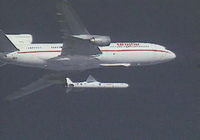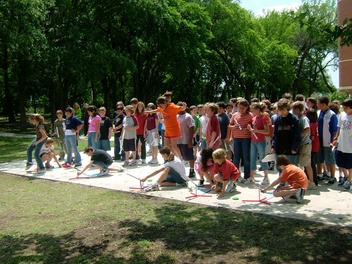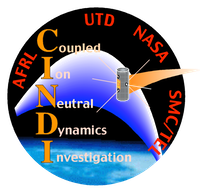
The C/NOFS spacecraft carrying CINDI was launched not from the Earth's surface, but from under a plane. For CINDI Education we use this uncommon, and interesting launch system as a spring board for lessons to explore Newton's Laws, projectile motion, design, rotational motion and more.
The satellite carrying CINDI (C/NOFS) was launched from a plane at an altitude of about 12,000 meters or 40,000 feet (near the top of the troposphere) using a Pegasus rocket. Our launch was at night, but there is a video of an earlier daytime launch to illustrate how the system works.
Question to spark class discussions: How does launching from a plane at an altitude of 12,000 meters (near the top of the troposphere) instead of the ground help save fuel? How does needing less fuel lower the mass of the rocket? Using Newton's second law of motion, how is acceleration affected by a lower mass rocket?
Activity: Paper rockets

Easy, fast, and inexpensive to make, these paper rockets can be made with regular copy paper and transparent tape. Other types of paper and tape are great for design experiments, too. For launchers, we recommend Stomp Rocket Ultra™, which has an adjustable launch angle and a launcher tube for which 1/2" PVC pipe makes an easy-to-store and inexpensive rocket mold. We have field tested these rockets with kids in design competitions for grades 5 and up, as well as with teachers. (Note: The "Industrial Strength Rockets" from which we adapted our activity use homemade launchers that degrade with time, and are no longer considered safe by NASA.)
We recommend the projectile motion interactive simulation from PhET (example below), free at phet.colorado.edu, for use with this activity to help determine the best launch angle for the rockets.

